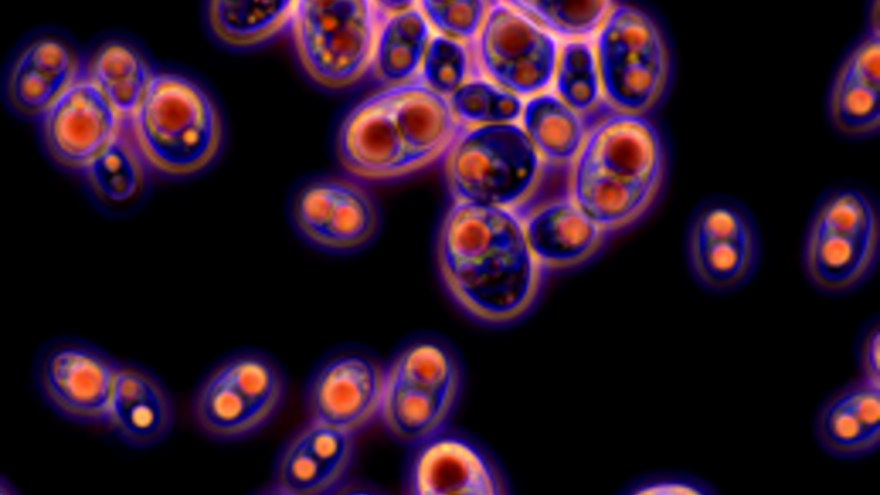About Oil4Feed
The Oil4Feed project aims at developing high-value oils for salmon feed from food by-products and lignocellulose biomass by use of oleaginous microorganisms.
Background
Due to a rising global production of farmed fish, there is increasing demand for high-quality protein and energy sources for use in fish feed. In particular, fish oil in aquaculture has increased dramatically in the last two decades.
In industrially formulated feeds, aquaculture is already consuming more than 70% of globally produced fish oil, creating environmentally unsustainable demand that cannot be met by the limited pelagic fish catch.
Due to stagnant production of fish oil from marine resources, the future needs for fish oil in aquaculture industry are expected to outstrip the current supply within the next decade.
Therefore, there is an urgent need for alternative and preferably land-based feed resources to replace the traditional fish oil sources.
Aims
The OIL4FEED project aims at developing high-value oils for salmon feed from food by-products and lignocellulose biomass by use of oleaginous microorganisms.
OIL4FEED will develop a process for producing microbial oils with a high level of ω-3 polyunsaturated fatty acids and ω-6 monounsaturated and polyunsaturated fatty acids by oleaginous microalgae and fungi from animal fat by-products and second generation sugars derived from Norwegian woody feedstock.
This will allow, for the first time, to establish, a new value chain from "Norwegian by-products – to –Microbial Feed Oils" in Norway. This will increase financial and environmental sustainability of Norwegian aquaculture, agriculture, forest and food industry.
OIL4FEED will deliver a complete set of new knowledge about the effect of algal/fungal oil on growth performance and health of fish.
Publications
Dzurendova S., Losada C.B., Dupuy-Galet B.X., Fjær K., Shapaval V.
Mucoromycota fungi as powerful cell factories for modern biorefinery
Applied Microbiology and Biotechnology (2021)Gaykawad S.S., Ramanand S.S., Blomqvist J., Zimmermann B., Shapaval V., Kohler A., Oostindjer M., Boccadoro C.
Submerged Fermentation of Animal Fat By-Products by Oleaginous Filamentous Fungi for the Production of Unsaturated Single Cell Oil
Fermentation 7 (2021) 300Dzurendova S., Shapaval V., Tafintseva V., Kohler A., Byrtusová D., Szotkowski M., Márová I., Zimmermann B.
Assessment of Biotechnologically Important Filamentous Fungal Biomass by Fourier Transform Raman Spectroscopy
International Journal of Molecular Sciences 22 (2021) 6710Tafintseva V., Shapaval V., Blazhko U., Kohler A.
Correcting replicate variation in spectroscopic data by machine learning and model-based pre-processing
Chemometrics and Intelligent Laboratory Systems 215 (2021) 104350Dzurendova S., Zimmermann B., Kohler A., Reitzel K., Nielsen U.G., Dupuy--Galet B.X., Leivers S., Horn S.J., Shapaval V.
Calcium affects polyphosphate and lipid accumulation in Mucoromycota fungi
Journal of Fungi 7 (2021) 300Langseter A.M., Dzurendova S., Shapaval V., Kohler A., Ekeberg D., Zimmermann B.
Evaluation and optimisation of direct transesterification methods for the assessment of lipid accumulation in oleaginous filamentous fungi
Microbial Cell Factories 20 (2021) 59Slaný O. , Klempová T., Shapaval V., Zimmermann B., Kohler A., Čertík M.
Animal Fat as a Substrate for Production of n-6 Fatty Acids by Fungal Solid-State Fermentation
Microorganisms 9 (2021) 170Dzurendova S., Zimmermann B., Tafintseva V., Kohler A., Horn S.J., Shapaval V.
Metal and Phosphate Ions Show Remarkable Influence on the Biomass Production and Lipid Accumulation in Oleaginous Mucor circinelloides
Journal of Fungi 6 (2020) 260Slaný O., Klempová T., Shapaval V., Zimmermann B., Kohler A., Čertík M.
Biotransformation of Animal Fat-By Products into ARA-Enriched Fermented Bioproducts by Solid-State Fermentation of Mortierella alpina
Journal of Fungi 6 (2020) 236Project partners
NMBU: Faculty of Science and Technology (REALTEK)
NMBU: Faculty of Chemistry, Biotechnology and Food Science (KBM)
NMBU: Faculty of Biosciences (BIOVIT)
California Center for Algae Biotechnology (UCSD), USA
Norilia AS, Norway
Borregaard ASA, NorwayParticipants at NMBU
Project coordinator
Project participants
